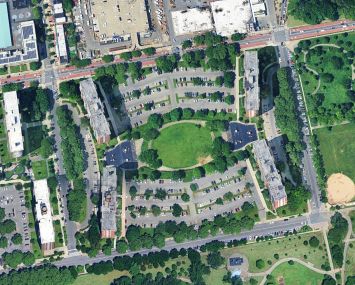With Stuy Town, Electeds Play Bailout Card On Fannie, Freddie
By Eliot Brown November 3, 2009 3:42 am
reprints With the ever-troubled Stuyvesant Town now bordering on default, particularly in the wake of last month’s giant court decision, a set of elected officials has begun taking their concerns straight to the 11,200-unit complex’s debt holders: Fannie Mae and Freddie Mac.
With the ever-troubled Stuyvesant Town now bordering on default, particularly in the wake of last month’s giant court decision, a set of elected officials has begun taking their concerns straight to the 11,200-unit complex’s debt holders: Fannie Mae and Freddie Mac.
Bypassing the current owners–a partnership led by Tishman Speyer–the officials who represent the property sent a letter last week effectively asking for kindness and cooperation during the inevitable restructuring process (within the next one to three months, the owners will run out of money to service the debt).
The electeds–U.S. Representative Carolyn Maloney, Councilman Dan Garodnick, State Senator Tom Duane, Borough President Scott Stringer and Assemblyman Brian Kavanagh–were not shy in reminding the two government-chartered organizations that they’re propped up by federal assistance, suggesting they pay it forward:
When the federal government decided it needed to use taxpayer money to help restore solvency to Fannie and Freddie, it involved a massive restructuring. While a painful process, it was ultimately necessary to ensure that your companies would remain strong for future generations. Much in the same way, we need to ensure that ST/PCV will be in place for future generations of middle class New Yorkers. We sincerely appreciate your concern in this matter and look forward toward working together.
Fannie and Freddie are only a part of the mess of investors and debt holders involved in the deal. They hold part of the primary $3 billion mortgage on the property via holdings in Commercial Mortgage Backed Securities, loans that were chopped up and sold around to numerous investors. There is also $1.4 billion in less-prioritized mezzanine debt, and there was another $1.8 billion or so in equity put into the property. Of all of this, Tishman Speyer and its affiliates put in just $112 million, according to a person familiar with the deal, a relatively minor stake.
The electeds seem to be assuming, as are most observers of the process, that the owners will default soon; and then the investors will work out what to do with the property as well as just how much it’s worth (the value based on current rents is about $1.8 billion), a difficult task given the uncertainties of the recent court decision. (A special servicer would presumably come in in the event of default, leading the restructuring).
The officials had a number of principles they wanted addressed:
[The story was changed to clarify that Fannie Mae and Freddie Mac were debt holders, via a set of Commercial Mortgage Backed Securities, not direct lenders].As significant holders of the first mortgage, Fannie Mae and Freddie Mac are uniquely situated to protect the interests of the 25,000 people who live in ST/PCV. No debt restructuring plan should be considered separate from that which serves the public interest. The financing scheme must (1) preserve Stuyvesant Town and Peter Cooper Village for middle class residents into the future; (2) protect the historic configuration of the property, including its open space; (3) maintain the upkeep on the property and tenants’ quality of life; and (4) keep Stuyvesant Town and Peter Cooper Village unified as a single community. In light of the size and considerable public interest of this property, we ask that any restructuring be done in consultation with us, adhering to our aforementioned principles.
Fannie and Freddie _Oct. 26, 2009
ebrown@observer.com


